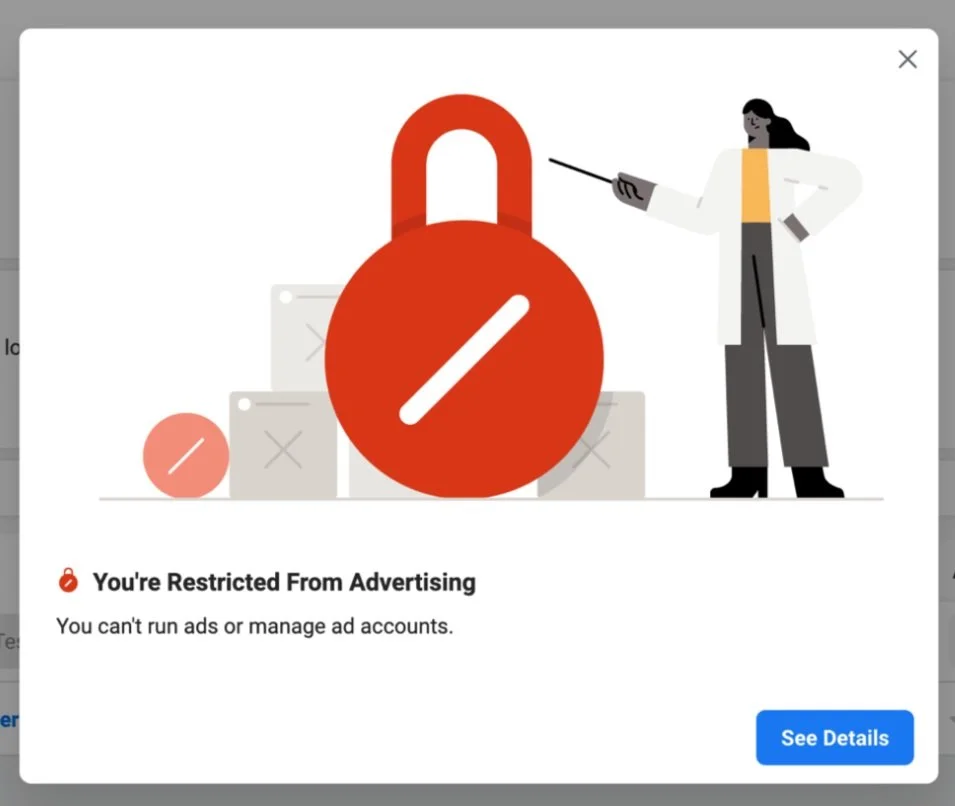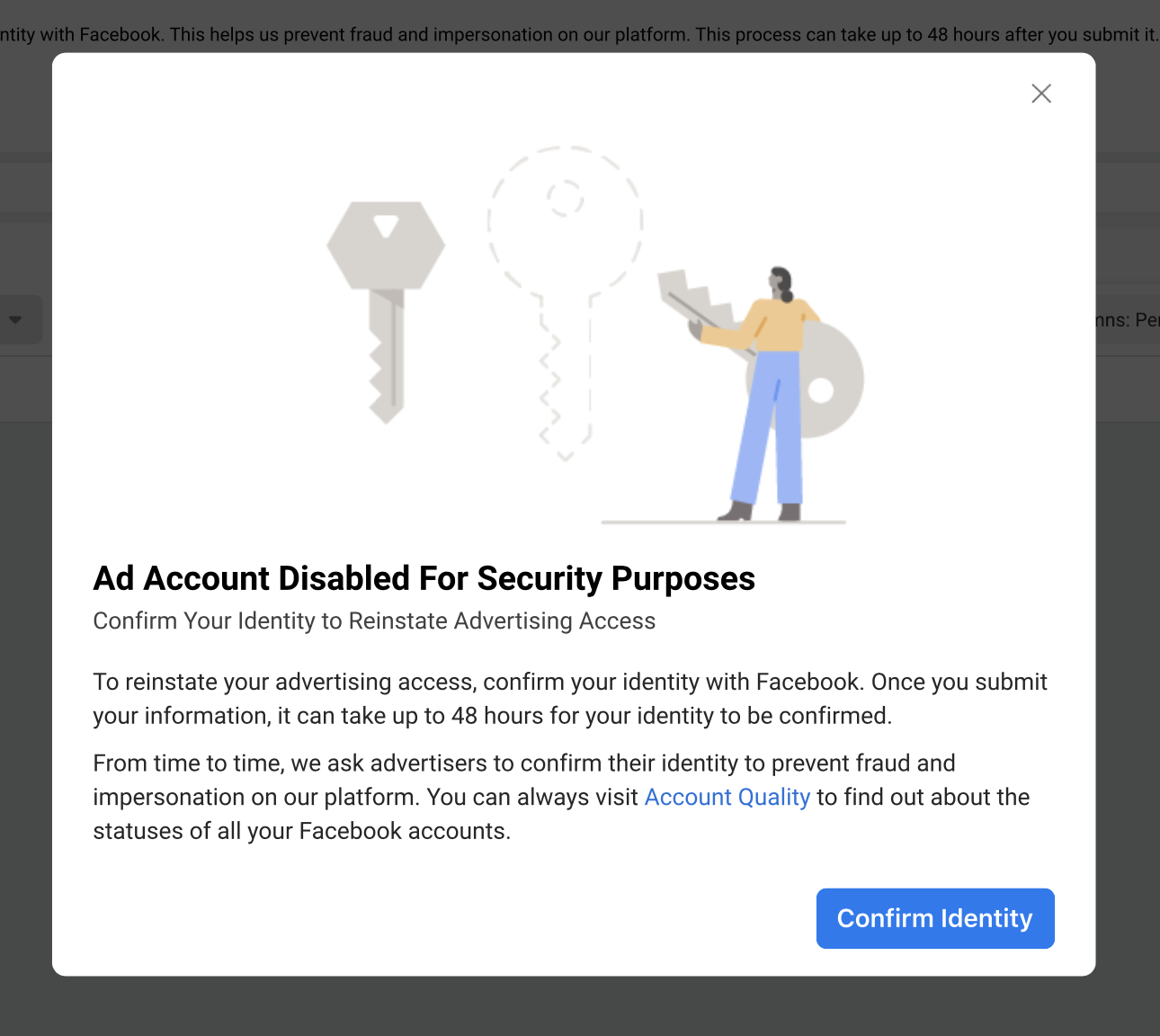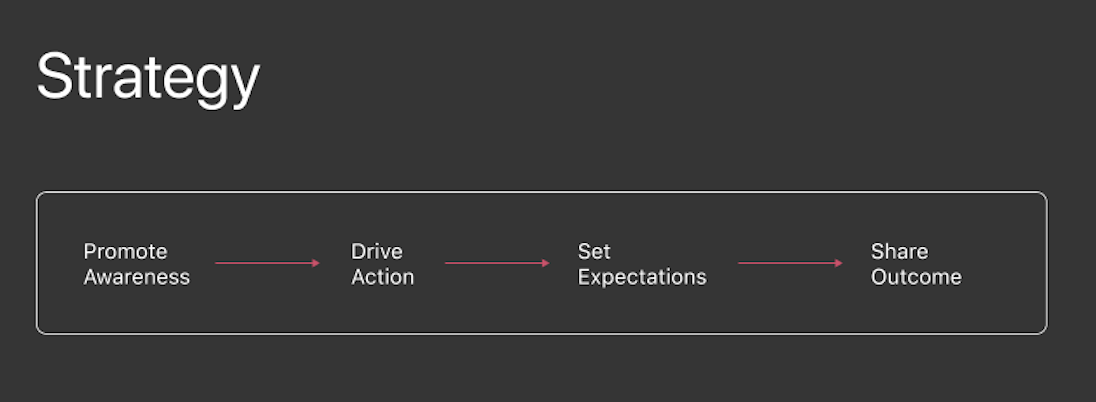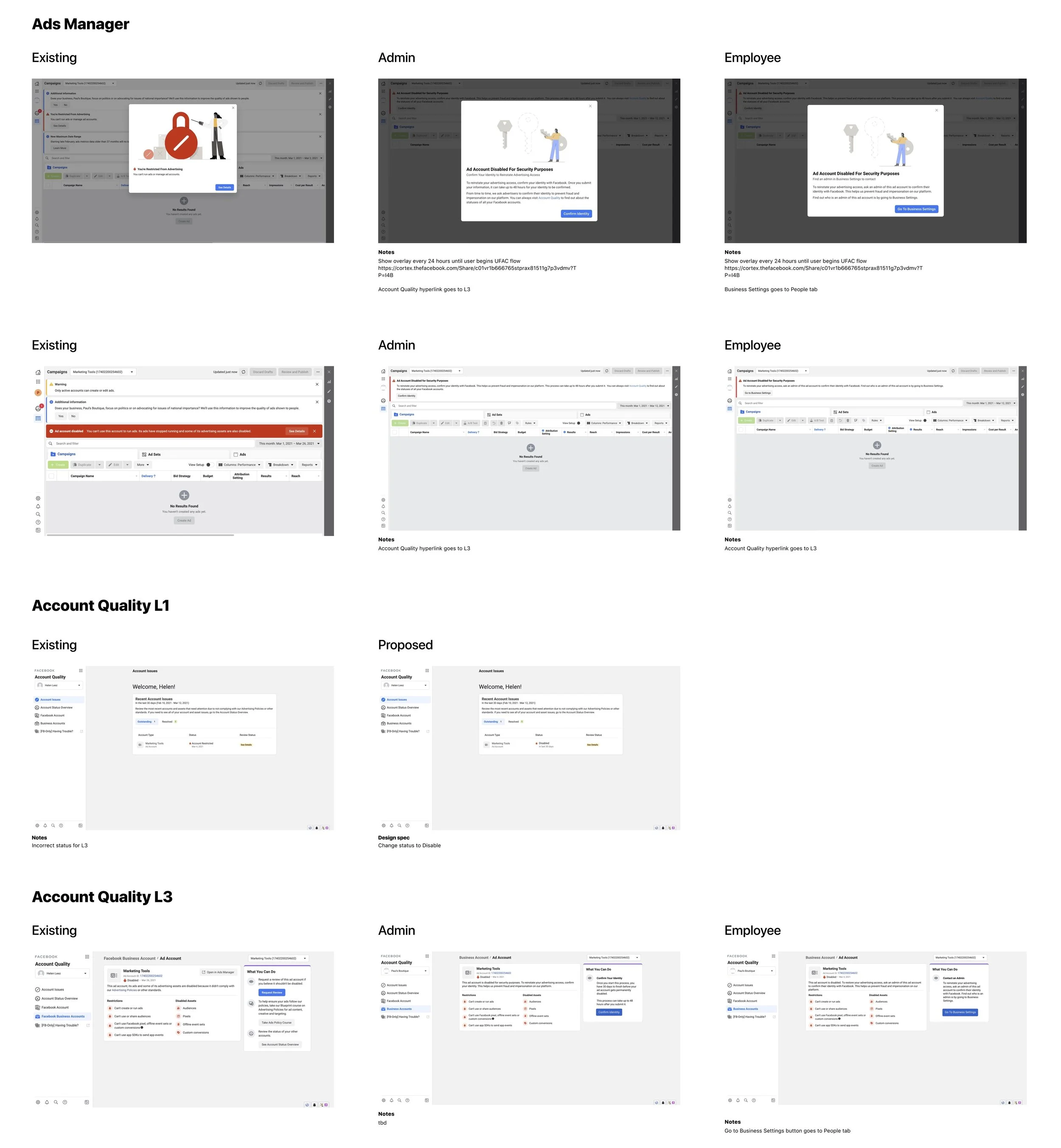Company Meta | Timeline 3 months
Problem
Meta occasionally requires advertisers to confirm their identity to continue running ads on our platform. This is necessary to reduce harmful ads on the Meta platform. But, it’s a very potentially stressful situation for a business to be blocked from running ads because it affects their revenue. The existing experience that prompted users to confirm their identity was very brief and made users feel they had done something wrong when they hadn’t. Because of this, many advertisers contacted our support center because they were frustrated with being blocked from running ads without a transparent reason.
Before re-design
After re-design
Team
I worked as the content designer for this project along with a product designer, 3 engineers, and a product manager.
Approach
The product designer and I audited a sampling of support center cases that dealt with this experience. We categorized the cases based on different UX issues that advertisers were reporting. I developed a strategy with our product designer to align the new experience to address the highest priority categories.
High-level strategy for the new user experience
The next consideration was that we had to develop 2 experiences for advertisers based on the permission for their account. Meta has several types of business accounts with differing levels of privacy and ability to make decisions on behalf of the business.
Admins — Because an admin account is for decision-makers at a business, the design would have a clear call to action to get their account reinstated to run ads.
Employees — Accounts for employees don’t have as many permissions to perform actions on behalf of the business. So, in the designs, the call to action for employees was to contact an admin of the account to reinstate the account.
This requirement made it so we had to develop 2 parallel experiences that were highly tailored to each type of user account. I collaborated closely with the product designer to create and map each part of our user journey to our high-level strategy.
How each part of the high-level strategy maps to the Admin and Employee experiences
For the initial experience where users learn their account is blocked from running ads, I changed the framing of the message to be more transparent and empathetic. I wanted to frame the messaging in a way that showed the value and benefit of confirming one’s identity on our platform. Creating a sense of togetherness and reason for an advertiser to go through this experience was important. I worked with cross-functional design teams to select a more appropriate illustration from Meta’s illustration library. I wanted to communicate to users that they held the power to unblock their account.
The first interaction that users have with the newly designed flow
Once the product designer and I had designed this initial modal experience, we moved on to create the entire end-to end experience that showed up throughout our entire ads ecosystem.
I’ve included an overview of our design files that shows the existing experience next to the 2 new admin and employee experiences we created. The user journey starts in Ads Manager, where users spend the majority of their time in the Meta Business products. From there, admins of the account navigate to a surface called Account Quality, where they can re-confirm their identity and unblock their accounts.
Once Meta validates their identity information, users are notified via in-product messaging and email that they are able to run ads again.
An end-to-end look at the existing designs next to the Admin and Employee flows
Outcomes
Outcomes for this project were measured by:
The number of advertisers who successfully confirmed their identity and
The number of support cases related to this experience
While the actual numbers are confidential, our team hit the goals of increasing advertisers who confirmed their identity and dramatically decreased the number of support cases from this experience.






